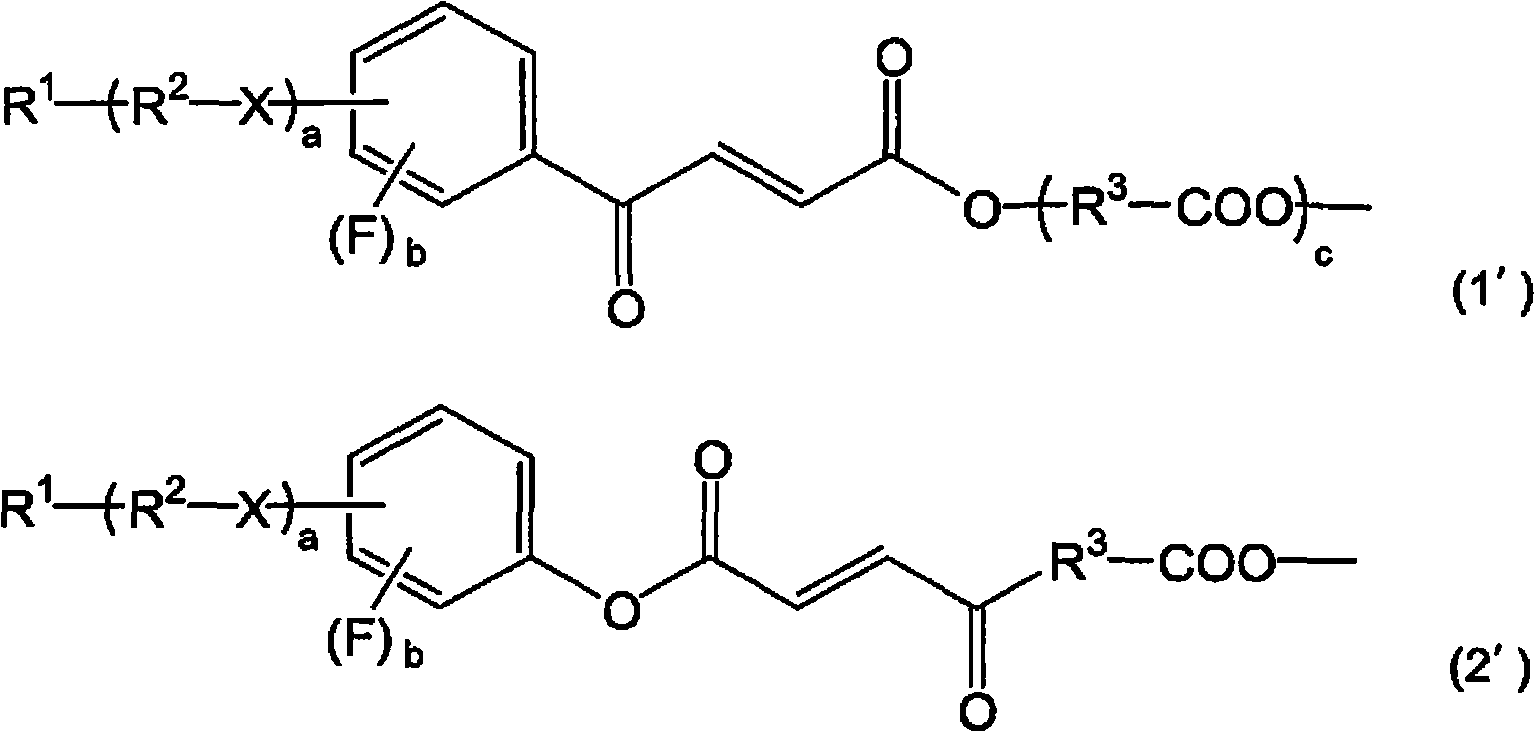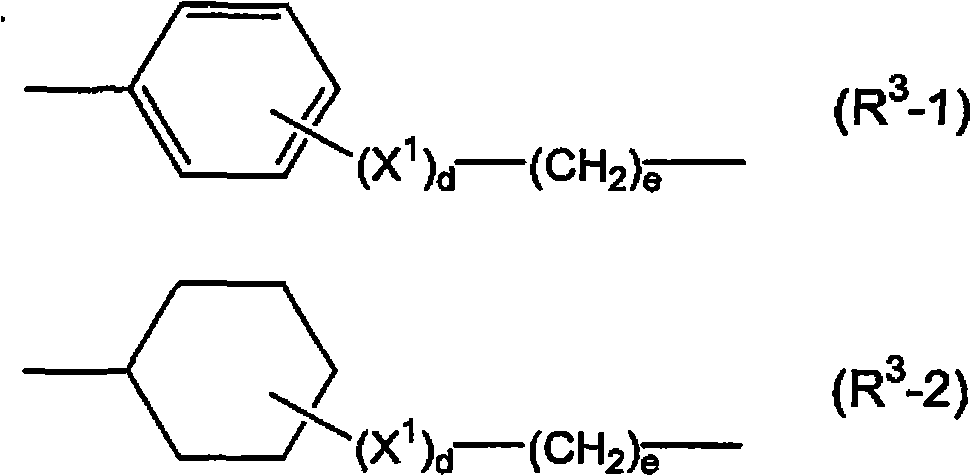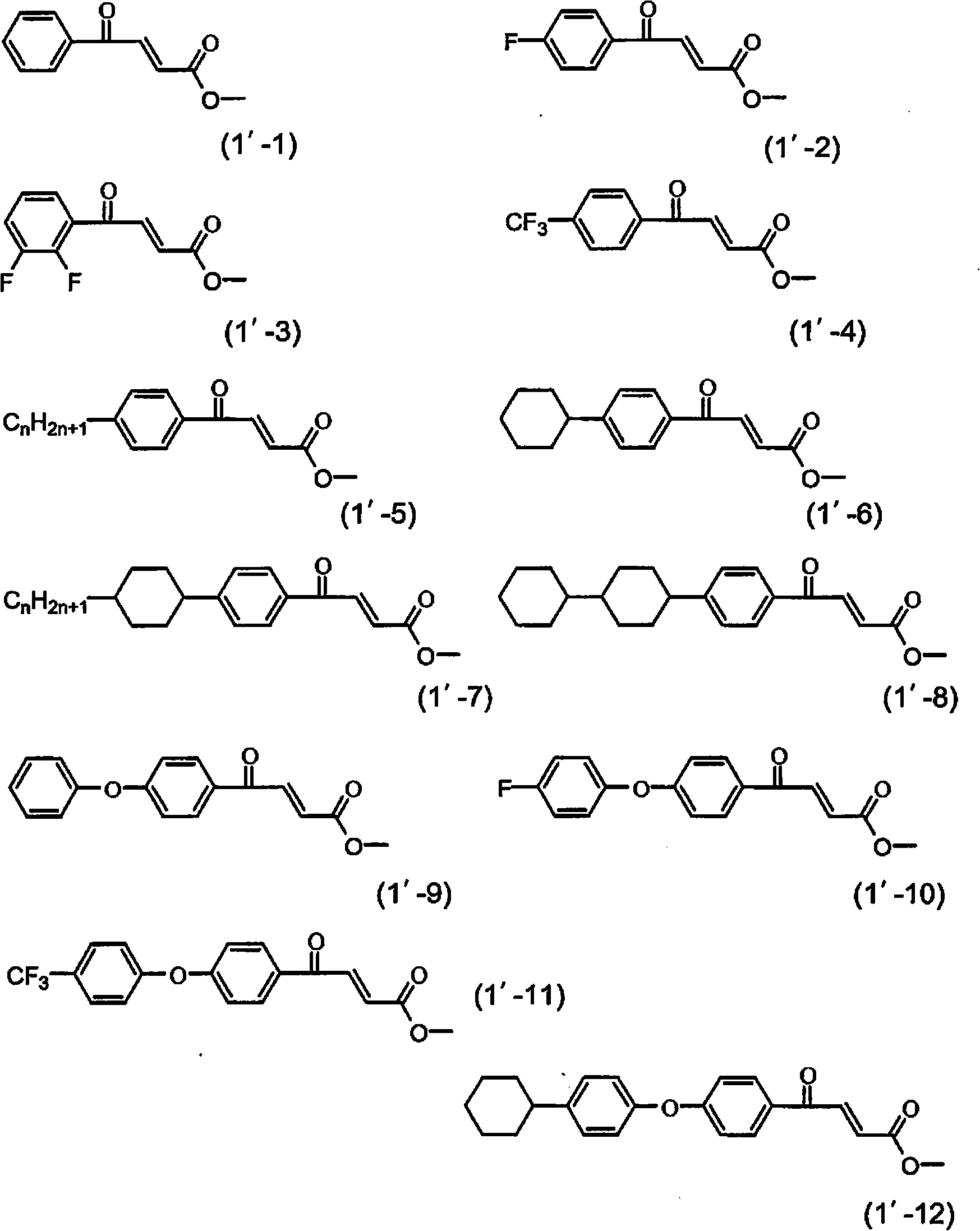Liquid crystal aligning agent, method for forming liquid crystal alignment film, liquid crystal display device, and related compounds
A technology of liquid crystal display element and liquid crystal alignment agent, which is applied in liquid crystal materials, chemical instruments and methods, organic chemistry, etc., can solve the problems of insufficient alignment control of liquid crystal molecules, and achieve excellent and balanced vertical alignment control and coating properties Excellent, cheap results
- Summary
- Abstract
- Description
- Claims
- Application Information
AI Technical Summary
Problems solved by technology
Method used
Image
Examples
Embodiment
[0262] Hereinafter, although an Example demonstrates this invention concretely, this invention is not limited to these Examples.
[0263] The weight-average molecular weights Mw in the following synthesis examples are polystyrene-equivalent values measured by gel permeation chromatography under the following conditions, respectively.
[0264] Column: manufactured by Tosoh Corporation, TSKgel GRCXLII
[0265] Solvent: THF
[0266] Temperature: 40°C
[0267] Pressure: 68kgf / cm 2
[0268] In addition, in the following synthesis examples, the synthesis of raw material compounds and polymers was repeated according to the following synthesis route as necessary to ensure the necessary amounts in the following examples.
[0269]
Synthetic example ES1
[0271] In a reaction vessel with a stirrer, thermometer, dropping funnel and reflux condenser, add 100.0 g of 2-(3,4-epoxycyclohexyl) ethyl trimethoxysilane, 500 g of methyl isobutyl ketone and 10.0 g of triethylamine, and mix at room temperature.
[0272] Next, 100 g of deionized water was dropped from the dropping funnel over 30 minutes, mixed under reflux, and reacted at 80° C. for 6 hours. After the reaction is over, take out the organic layer, use 0.2% by weight of ammonium nitrate aqueous solution to wash it until the water after washing is neutral, then distill off the solvent and water under reduced pressure to obtain a viscous transparent liquid having epoxy groups polyorganosiloxane (ES-1).
[0273] As a result of 1H-NMR analysis of this polyorganosiloxane having an epoxy group, a peak based on the epoxy group with the same theoretical intensity was obtained around chemical shift (δ) = 3.2 ppm. No side reactions of epoxy groups were produced.
[0274] Table 1 show...
Synthetic example ES2
[0275] Synthesis example ES2~3
[0276] Except that the raw materials charged were as shown in Table 1, polyorganosiloxanes (ES-2) and (ES-3) having epoxy groups were obtained as viscous transparent liquids in the same manner as in Synthesis Example 1, respectively.
[0277] Table 1 shows the Mw and epoxy equivalent of these epoxy group-containing polyorganosiloxanes.
[0278] In addition, in Table 1, the abbreviations of the raw material silane compounds have the following meanings, respectively.
[0279] ECETS: 2-(3,4-Epoxycyclohexyl)ethyltrimethoxysilane
[0280] MTMS: Methyltrimethoxysilane
[0281] PTMS: Phenyltrimethoxysilane
[0282] Table 1. Synthesis of polyorganosiloxanes with epoxy groups
[0283]
PUM
| Property | Measurement | Unit |
|---|---|---|
| surface tension | aaaaa | aaaaa |
Abstract
Description
Claims
Application Information
 Login to View More
Login to View More - R&D
- Intellectual Property
- Life Sciences
- Materials
- Tech Scout
- Unparalleled Data Quality
- Higher Quality Content
- 60% Fewer Hallucinations
Browse by: Latest US Patents, China's latest patents, Technical Efficacy Thesaurus, Application Domain, Technology Topic, Popular Technical Reports.
© 2025 PatSnap. All rights reserved.Legal|Privacy policy|Modern Slavery Act Transparency Statement|Sitemap|About US| Contact US: help@patsnap.com



